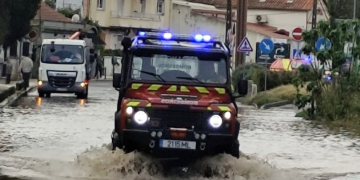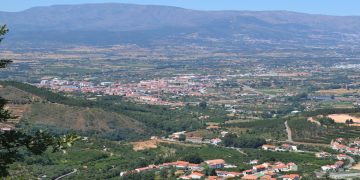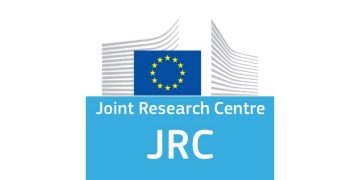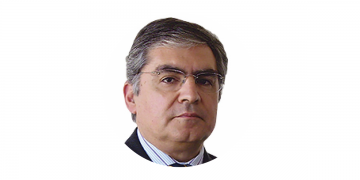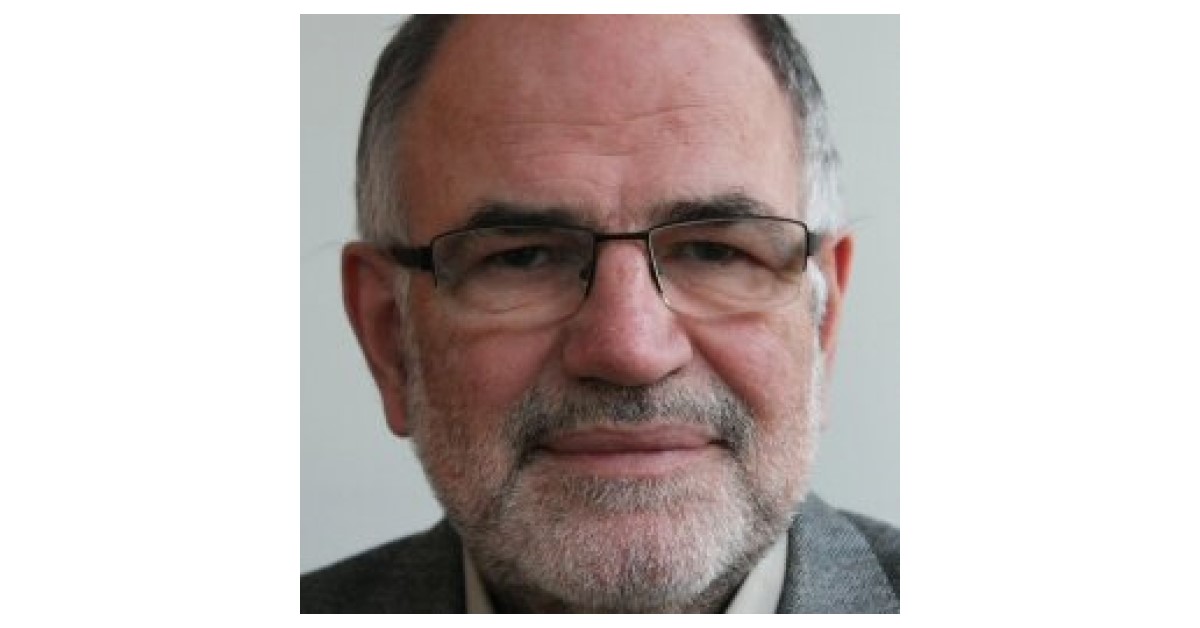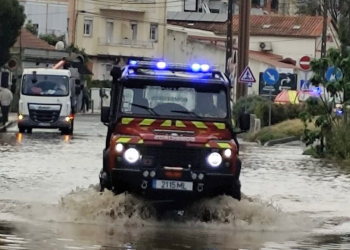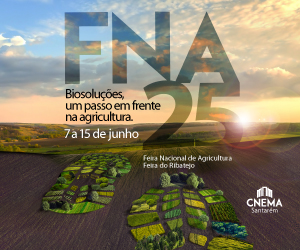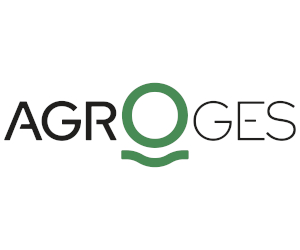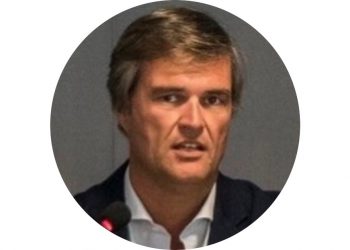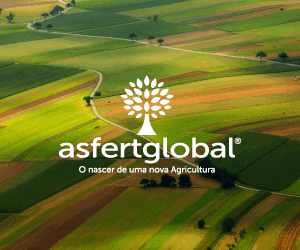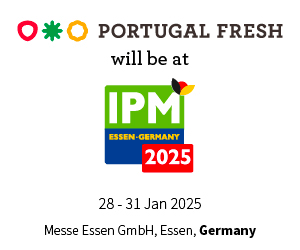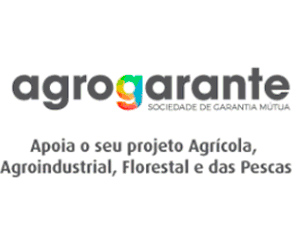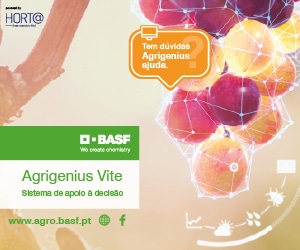The Commission Communication on The road to the next multiannual financial framework published in February 2025 put forward several proposals for the reform of the MFF structure prior to the formal legislative proposal now pencilled in for July 2025. For the Commission, the key priority is the scale of the budget and the means to finance what it sees as inevitably greater expenditure in the coming programming period. It notes in bold print on page one of the Communication that Europe needs to square the circle: “there cannot be an EU budget fit for our ambitions and notably ensuring the reimbursement of NextGenerationEU, and, at the same time, stable national financial contributions without introducing new own resources”.
The arguments for increased EU budget expenditure are well known. On this occasion they are amplified by the needs to support a surge in defence spending, to address the lagging competitiveness of European industry as identified in the Draghi report and to support the Clean Industrial Deal, as well as to start repayments of the borrowing undertaken to fund the Next Generation EU.
On the other hand, the reasons why Member States have been unable so far to agree on any significant increase in the EU’s own resources (where so far the only increase agreed since the last MFF negotiations has been the proceeds of a levy on non-recycled plastic packing waste) are also well known. These issues of budget size and potential new own resources are not addressed in this post.
Instead, I want to focus on some ideas in the Commission Communication regarding the structure and design of the MFF. The Communication declares that “The scale of the challenges ahead thus calls for an ambitious budget, both in size and design” (p. 4, bolding added). Indeed, the Budget Commissioner Piotr Serafin stated in a recent speech: “These realities [the need to address new expenditure priorities] require us to make difficult choices. They will come. But at this point the Road to the next Multiannual Financial Framework suggests to concentrate the debate on how the EU budget, whether big or small, could work better and how to increase the impact of every euro spend through the EU budget.”
Improving the effectiveness of CAP spending is obviously highly desirable, and there are many proposals for reform of the CAP regulations intended to do this. But it is also worth asking how the design of the MFF could contribute to this objective. Does it matter if the CAP is a stand-alone policy based on its twin funds, the EAGF European Agricultural Guarantee Fund and EAFRD, the European Agricultural Fund for Rural Development, or if it were integrated into a broader spending plan at national level? What might be the impacts good or bad of different MFF designs for the delivery of agricultural funding? These are the questions explored in this post.
Understanding the Commission’s MFF thinking
Among the proposals for improved design in the Commission Communication are changes in the number of funds, introducing policy-based budgeting, introducing performance-based budgeting, and introducing greater flexibility to reallocate resources within the budget to respond to crises and emergencies (Table 1). Many of these ideas were already prefigured in Commission President-elect von der Leyen’s Political Guidelines when she was seeking support for her nomination from the European Parliament.
There is no specific proposal in the Communication to merge different funds into a single fund, although it is noted that the existence of over ten pre-allocated funds requiring separate planning and programming efforts creates a heavy administrative burden for managing authorities. However, it reiterates von der Leyen’s idea that the future MFF would require “a plan for each country with key reforms and investments” focusing on joint priorities.
Nonetheless, expectations were raised by a leaked presentation produced within the Commission last October apparently as a brainstorming exercise (Natasha Foote has as usual an excellent summary of the leaked presentation on the ARC2020 website, this podcast by Euractiv provides a good flavour of what was envisaged, while Farm Europe also refers to key points in this document in a blog post here). The ARC2020 summary includes a critical slide from the leaked presentation which proposes the idea of Single Fund which includes the main pre-allocated funds (Regional Fund, Cohesion Fund, Social Fund, Fisheries Fund, CAP funds and possibly others).
This idea of a Single Fund has created considerable angst among the agricultural policy community (see this recent Politico article by Bartosz Brzezinski and Gregorio Sorgi). In its conclusions responding to the Commission’s Vision for Agriculture and Food intended as political guidelines for the forthcoming legislative proposal, the AGRIFISH Council noted “that the CAP is fit for the policy-based distribution of agricultural funds, therefore URGES to maintain a separate and independent CAP containing two pillars with enhanced coherence.”
The Budget Commissioner Piotr Serafin gave an inkling in a recent speech on how the Commission’s thinking is evolving. He associated the idea of a single national plan per Member State linking key reforms with investments specifically to cohesion spending. The idea would be to increase the impact of investments financed by the EU budget. But, no doubt aware of the critical reaction from the regions to this proposal, he went on to say “What we should discuss, however, is what reforms, and at what level and who should bear consequences of no reforms”.
Then, specifically with reference to the proposed new Competitiveness Fund, he also raised the need to simplify the funding galaxy by merging some of them, but he was careful to add “only where it makes sense”. The funds identified as potential candidates for merging, including Horizon, EU4Health, the Digital Europe Programme, the Innovation Fund, the Programme for the Environment and Climate Action (LIFE), the European Defence Fund and others, are all funding instruments under direct management and not shared management.
This means that the Commission is responsible for all steps in a programme’s implementation: launching the calls for proposals, evaluating submitted proposals, signing grant agreements, monitoring project implementation, assessing the results, and making payments. No Member State agencies are involved. These direct management instruments make up about 20% of the MFF budget. (This Commission web page explains the different management modes for EU spending).
Serafin’s speech makes no reference to the CAP. This post takes up this issue of what MFF design would make sense where the CAP is concerned and how would this relate to the Single Fund proposal. I argue that, while merging the CAP with cohesion and other shared management funds in a Single Fund has obvious drawbacks, this should not preclude some careful reflection on the place of agricultural spending in a redesigned MFF.
The CAP in a Single Fund proposal
Let us look first at why the Commission brainstorming might have been attracted to merge shared management funds into a Single Fund in the light of the stated objectives of the redesign of the CAP identified in Table 1.
One objective is to simplify access to EU funds for beneficiaries. The Communication acknowledges that the many different spending programmes, each with different eligibility rules, application processes, co-financing rates and multiple entry points, are not easy for beneficiaries to navigate. It notes that “A true single point of entry for beneficiaries to all EU funding and advisory services in the next financial framework could facilitate access for beneficiaries”. But this duplication of sources of funds is not a burdensome issue for farmers and would not make a strong case for merging the CAP with cohesion and other funds.
A second objective recognises that the fragmentation of the financial landscape translates into too many programming documents, which are resource-intensive for administrations and lead to delays. Undoubtedly, there were significant start-up costs for national administrations with the introduction of national CAP Strategic Plans in the current programming period. But it is difficult to see why merging CAP programming into the programming of a Single Fund would dramatically reduce the workload of agriculture ministries, which would still be required to draft the agricultural programming element for a Single Fund.
A third objective is to achieve a more flexible MFF where resources could be re-allocated when necessary to address urgent crises and unforeseen expenditure needs. Here the Communication notes that the EU budget differs from national budgets in that it is largely an investment budget subject to multiannual planning. An investment budget may have indicative spending amounts, but it does not involve future financial commitments to specific beneficiaries. This contrasts with much of the CAP budget where there is at least an implicit commitment to funding individual farmers over the life of the MFF.
It might be argued that this is an unreasonable inflexibility. Given support payments are renegotiated every seven years, there is no inherent reason why this renegotiation should not occur, say, three years into a programming period if other urgent expenditure needs appear. But getting this flexibility does not appear to require merging the CAP into a Single Fund. The main barrier here is the inflexibility of the headings set out in the MFF itself (these are the limits per main area of activity (headings and sub-headings) set at the beginning of the MFF period and which constrain the transfer of resources).
One unspoken consequence of creating a Single Fund and requiring Member States to prepare a national plan and programme expenditure against national priorities and targets is that, to a greater extent than at present, Agriculture Ministers would have to fight their corner with other national spending ministries to hold on to the agriculture budget. One does not have to be a total cynic to suggest that this potential consequence may be one reason why the AGRIFISH Council of Ministers opposes the proposal.
This could have positive consequences. The problem with the pre-allocation of CAP funds to national agriculture ministries at present is that much of it is effectively free money (co-financed expenditure under Pillar 2 is somewhat different). There is no pressure on ministers to justify how they propose to make use of the money. Thus we see the continuation of passive income transfers to farmers who perceive this as ‘their money’ because to try to make more ambitious use of the funding will simply upset their farmer clients. The CAP strategic planning exercise must meet a minimum threshold to gain the approval of the Commission, but it has no bearing on the amount of funds that a country will receive, this has already been decided in the MFF conclusions.
However, there would also be strong negative downsides. Because the agricultural budget in each country would now be determined by national intergovernmental negotiations, there would be a high likelihood that the resulting levels of direct payment support to farmers would also be very different across countries. This fear applies particularly to direct income support payments. If farmers in France perceive that Spanish farmers are receiving a higher level of support, there is a high risk that acceptance of free competition within the single market would be threatened.
There is greater acceptance of differences in payments for agri-environment-climate practices across countries. Farmers who enrol in these programmes will usually incur costs and the payments are limited by the requirement that they should not cover more than the costs incurred or income foregone by the farmers concerned (even if we recognise that these concepts are quite elastic and should be interpreted sufficiently flexibly to ensure the requisite uptake). But the risk to the single market if we ended up with large differences in the level of income payments per hectare as a result of 27 national plans is too great. Maintaining a level playing field requires maintaining a separate CAP budget, at least for direct income support payments, at EU level.
Another unspoken concern about merging CAP into a Single Fund is that the allocation criteria across member states would need to be decided. Cohesion and agricultural spending are roughly of equal size, but currently the criteria for distributing these funds between countries is very different. Without getting into the important details, one can summarise by noting that cohesion funding is linked to GDP per capita figures while the more important CAP Pillar 1 payments are distributed according to shares in utilised agricultural area (there is no objective basis for the distribution of CAP Pillar 2 payments which are heavily influenced by historic path dependencies). Even if a Single Fund combined these criteria in some way, there is a strong likelihood that there could be significant shifts in the net receipts situation of member states as a result. Such shifts could be avoided by using the implicit shares in the current MFF for the combined funds that might be merged in the Single Fund as the allocation criteria, but the absence of clear objective criteria would be very unsatisfactory when it came to deciding future allocations.
Yet another fear is that including the CAP within a Single Fund that would be subject to general conditionalities might risk disrupting direct payments to farmers for reasons that had nothing to do with them. An example might be the EU’s decision to withhold payments under the Recovery and Resilience Facility from Poland in the period 2022-2023 despite the fact that Poland’s National Recovery Plan was approved in June 2022. The EU took this decision because the then PiS government in Poland had introduced measures that increased political control over judges thus undermining judicial independence. This led to the triggering of the Rule of Law Conditionality Mechanism in December 2021 which allows the EU to freeze funds if rule-of-law breaches involve a direct risk to EU financial interests.
However, the EU froze RRF funds not under this Conditionality Mechanism but because the RRF legislation itself required member states ex ante to commit to milestones and targets on judicial independence and anti-corruption. Both CAP and most cohesion funding continued to be paid to Poland because the Rule of Law Conditionality Mechanism operates ex post. Payments can be suspended only if the rule-of-law breaches result in serious deficiencies directly risking EU money, which is a higher hurdle to prove than for RRF payments. As it happens, the revised Polish Recovery Plan includes very significant funding for Polish agriculture which was delayed because of the funding freeze, and there is a risk that Poland will not be able to spend this money before the deadline expires. CAP funding could also have been frozen if, at the time, the RRF and CAP funding had been merged into a Single Fund with the same ex ante conditionalities.
Taking these arguments together, we do not see a Single Fund as set out in the Commission brainstorming presentation as an appropriate model for the future CAP. This is largely because direct payments as income support transfers are not analogous to investment funds and it is not appropriate to treat them in the same way. As long as income support payments remain an important element of the CAP, they should be decided at EU level to minimise any risks to the single market. But this does not mean that the status quo is necessarily the preferred option. In the following section, we explore three different design models for how the CAP might be structured in the next MFF.
Possible future MFF design models for the CAP
Integration of EAFRD with the Competitiveness Fund. In all models, direct income transfer payments under the European Agricultural Guarantee Fund (EAGF – Pillar 1 of the CAP) would be left untouched as a stand-alone fund. In this model, the European Agricultural Fund for Rural Development (EAFRD – Pillar 2 of the CAP) would be merged with the Competitiveness Fund. Here we refer to the two funds in principle, allowing (as argued later) that specific expenditure items currently undertaken in one or other fund should be switched to the other. While conceptually attractive, this option is a non-runner.
There are good reasons to reframe the EAFRD as a competitiveness fund – this clearly covers investment aids as well as rural development supports designed to improve agricultural and rural area competitiveness, respectively. But it could also apply to the ring-fenced agri-environment-climate expenditure designed to strengthen the resilience of the EU agricultural sector to future shocks through improved soil health, the conservation of biodiversity and pollinators, reduced emissions, while protecting water quality and quantity. Reframing in this way would also help to minimise the often-felt polarisation between economic and environmental objectives in the agricultural sector.
Unfortunately, this option is a non-runner for practical reasons. The Competitiveness Fund will group the various EU direct management programmes together. The legislator explicitly requires that most expenditure under the CAP Strategic Plans shall be implemented under shared management (Regulation (EU) 2021/2116) with exceptions for some minor EAGF expenditure concerning promotion of agricultural products, the conservation of genetic resources, and farm accountancy and agricultural surveys. This is decided under secondary legislation and is not an obligation in the Treaty itself, so possibly could be altered. But practically, it is impossible to envisage that the Commission would take direct responsibility for administering, for example, applications for investment aids from individual farmers throughout the Union, or applications for enrolment in agri-environment-climate schemes.
Integration of EAFRD with cohesion spending and other shared management funds. This can be seen as the ‘little brother’ to the Single Fund idea as it excludes EAGF direct payments from inclusion in the requirement to prepare a single national plan with targets and performance indicators. Apart from the arguments outlined previously, there are good logical arguments in favour of this division. Although the Commission made a big deal out of the extension of strategic planning from rural development programming to cover all CAP expenditure including in Pillar 1 in the last CAP reform, the idea of applying performance targets to what are essentially transfer payments to individuals makes little sense.
This is confirmed by looking at the Result indicators used for the objective of supporting farm income which are purely administrative targets (for example, R.4 Share of agricultural area covered by income support and subject to conditionality). These indicators have nothing to do with any meaningful notion of performance and it is nonsense to try to shoehorn income transfer payments into a strategic planning framework. This will become increasingly evident as CAP direct payments become increasingly focused either on providing supplementary pension income to older farmers or income top ups for smaller holdings and lose any relevance they might have had to maintaining food production capabilities in Europe.
If direct income transfer payments to farmers are left with EAGF, this leaves open whether EAFRD funding should remain linked with it in an overall CAP fund or be merged with cohesion funding and other shared management funds in a new Single Fund. I assume that under the second option the relevant measures (investment aids, AECM funding, specific rural development measures) would continue to be managed by agriculture ministries as at present. The decision requires weighing up any potential performance benefits from putting these specific measures into a larger funding pot, as against the likely disruption from moving away from the CAP strategic planning approach trialled for the first time in the current programming period, and thus implementing a further change in administrative procedures.
The performance benefits of integrating EAFRD measures into a Single Fund do not seem very significant to me. I pointed out earlier that a possible benefit of including CAP measures in a Single Fund is that this would require weighing up the benefits of these measures against alternative uses of these funds at national level. This argument is of most relevance to Pillar 1 payments. In the case of EAFRD measures, member states must anyway come up with national co-financing which imposes a certain amount of fiscal discipline.
I don’t see any performance benefits from managing investment aid applications in a Single Fund rather than as part of a CAP fund. One area where some benefits might be observed is with specific rural development measures where place-based measures could benefit from synergies with regional policy measures implemented under cohesion policy. It is also possible that programming farm-level environmental payments as part of a Single Fund might improve the level of ambition of the specific measures adopted as part of an agri-environment-climate scheme, but I find it hard to see why this should be the outcome. Given the limited benefits foreseen, the argument for avoiding further administrative disruption and allowing more time for the CAP strategic planning process to bed down appears more convincing.
Merging the two CAP pillars. A more limited structural reform would be to consider merging the two CAP funds into one. The two-Pillar structure of the CAP was introduced with the Agenda 2000 reform, and the two separate funds EAGF and EAFRD to finance each Pillar were established in 2005 (Regulation (EC) No 1290/2005). Each fund finances specific areas of the CAP. Some principal differences in the management of the two funds include the following:
- Expenditure under EAFRD was programmed against specific objectives whereas this was not the case for EAGF expenditure on direct payments. This has now changed with the CAP Strategic Plans Regulation (EU) 2021/2115 which purported to extend strategic planning to EAGF expenditure as well. I argue above that this is more notional than tangible when it comes to the direct income support payments, but there is no longer a difference in principle on this criterion.
- EU expenditure under EAFRD only partially finances rural development interventions under shared management, with MSs required to make a national co-financing contribution. EAGF expenditure is fully funded from the EU budget.
- The EAGF operates on an annual basis and commitments to MSs must be spent within that year. The EAFRD operates on a multi-annual basis where unspent commitments in one year can be carried forward to later years, within rules established in the CAP regulation.
- EAGF expenditure that is recovered where the expenditure is not in conformity with Union legislation is paid back to the Fund and becomes assigned revenue in the EU budget. In the case of the EAFRD, sums recovered or cancelled following irregularities remain available to the approved rural development programmes of the Member State concerned.
If the two-Pillar structure of the CAP is retained, and given the changes introduced by the new delivery model, in particular the extension of a programming approach to both Pillars, the question arises if the two-Pillar structure continues to serve a purpose. Member states already have the possibility to modulate the pre-allocated amounts they receive between the two Pillars, within limits laid down in the legislation. Also, the introduction of eco-schemes in Pillar 1 financed from EAGF with the same objectives as AECMs in Pillar 2 financed by EAFRD further blurs the distinctiveness of the two Pillars. Options to support young farmers are also present in both Pillars, while support for areas with natural constraints could be provided under both Pillars in the 2014-2022 CAP. These overlaps suggest there could be a case to merge the two Pillars. An issue raised by any such merger would be whether to extend the co-financing principle to direct payments, but this is not an essential element as an EU co-financing rate of 100% could be established for these payments under a unified structure.
Even if convincing financial management reasons to maintain the two-Pillar structure exist, the parallel pursuit of environmental, climate and social objectives through different interventions in Pillar 1 and Pillar 2 complicates their programming. The introduction of eco-schemes in Pillar 1 by Commissioner Hogan was primarily an exercise in political economy. He wanted to increase the environmental ambition of the CAP (partly as an argument to protect the level of CAP spending), but recognised there would not be political support to transfer resources from Pillar 1 to increase the ceilings for Pillar 2 in the MFF negotiations. The fudge was to introduce the idea of voluntary eco-schemes in Pillar 1 to fund in principle the same practices as could be funded by voluntary AECMs in Pillar 2. This allowed an increase in CAP environmental spending without disturbing the traditional relationship between the Pillar 1 and Pillar 2 ceilings in the MFF.
But having two schemes with the same objectives but with different financial management rules complicates administrative programming. Also, the need to limit eco-schemes to annual schemes to fit with the Pillar 1 structure greatly reduces their environmental effectiveness, given that it takes time to achieve the desired environmental outcomes. Probably the easiest way to address these issues would be a mandatory requirement in the CAP legislation to transfer the ring-fenced allocation for eco-schemes to Pillar 2 to be managed as AECMs when countries prepare their CAP Strategic Plans. As long as Pillar 1 direct payments do not require national co-financing, there should be no obligation for national co-financing of the transferred amounts.
Given there are some differences between the two schemes, some reformulation of the rules regarding AECMs would be required to accommodate the additional flexibilities now possible under eco-schemes (e.g. the possibility to make annual payments where these can be justified). It would be difficult to transfer the top-up payment option now available under eco-schemes to an AECM framework, but the new rules permitting AECM payment levels to be set in relation to the target enrolment to be achieved make that option unnecessary.
New funds – Nature and Just Transition Funds. Proposals have also been made for new funds supporting farmers but outside the CAP, most notably in the report of the Strategic Dialogue on the Future of Agriculture. This report called for “the establishment of a well-resourced nature restoration fund (outside of the CAP) to support farmers and other land managers to restore and manage natural habitats at the landscape level”.
The proposal for a dedicated Nature Restoration Fund had been included as an amendment to the Commission’s draft Nature Restoration Law proposal in the draft report prepared by the Environment Committee’s rapporteur César Luena, S&D. This did not survive opposition from EPP lawmakers. However, in the final legislation, the Commission is required to present a report within 12 months from the date of entry into force of the Law identifying any implementation gaps, which should include, where appropriate, financial measures such as the establishment of dedicated funding. An important marker was set in the legislation that the preparation of national restoration plans should not imply an obligation for Member States to re-programme any money intended for agricultural or fisheries funding under the MFF to implement the Nature Restoration Law (though presumably they could decide to do so if they saw good reasons).
The proposal for a dedicated Nature Restoration Fund has also been supported by several environmental NGOs. One 2024 NGO proposal called for a Fund of between €15 and €25 billion annually to ensure effective implementation of the Nature Restoration Law and Natura 2000. The Fund would be managed under shared management with Member States and accessible to a broad range of stakeholders, including local and regional authorities, associations, and NGOs. The report of a workshop hosted by IEEP in 2023 examined some of the barriers and opportunities involved in creating a stand-alone Nature Restoration Fund in the next MFF.
The Strategic Dialogue report also recommended a temporary Agrifood Just Transition Fund (AJTF) to provide one-off investment support as well as support for capacity building to farmers and other food system actors for their sustainability transition. The EU already has a Just Transition Fund but it is not oriented towards agriculture. Based on voluntary buy-in and a business plan, the proposed Fund would offer financial assistance for farm transformation, access to new equipment, support for new businesses in rural areas, voluntary buy-out schemes, and up-and reskilling programmes to transition to alternative production systems. It would have a particular focus on areas of high concentration of livestock where destocking solutions could be financed using the Fund. A recent IEEP paper explores some of the issues that might be involved in creating such a fund.
The Commission’s Vision for Agriculture and Food steered clear of making any proposals on funding, apart from highlighting that work has started to draw in private funding for nature and climate protection.
A main motivation for proposing the creation of new funds is to avoid the inevitable political opposition to diverting existing CAP funds for these purposes (as underlined by the amendment to the Nature Restoration Law cited above). A second objective is that creating dedicated funds with a specific mandate to support nature restoration or a just transition, and possibly with a wider governance structure than traditional CAP funding instruments, would lead to greater ambition in the way the money is spent.
Unfortunately, both objectives fly in the face of current MFF realpolitik. Despite the merits of the case for additional funding for these purposes, the likelihood of squeezing additional resources out of the EU budget in the current climate appears remote. The proposal to create new and additional funds also runs counter to the Commission’s expressed desire to reduce the number of funds.
Currently, both the European Regional Development Fund and the Cohesion Fund have specific objectives “Enhancing protection and preservation of nature, biodiversity and green infrastructure, including in urban areas, and reducing all forms of pollution” and “Promoting climate change adaptation and disaster risk prevention and resilience, taking into account ecosystem-based approaches.” Member States must allocate 30% of ERDF funding to climate action (including biodiversity-linked approaches) while at least 37% of Cohesion Fund allocations must support climate objectives (including biodiversity).
There would thus be scope to programme both nature restoration and just transition funding within a Single Fund model where the AECM, eco-scheme and specific rural development spending would be merged with other shared management funds, leaving the CAP budget consisting of the remaining elements of current CAP support. Whether this would lead to a potential improvement in the effectiveness of spending in these areas is an open question. But at a minimum it would require that the funding currently allocated to these areas in the CAP would be moved to the new Single Fund. If only the responsibility was shifted but not the funding, the most likely outcome would be that the CAP would revert to a pure income transfer instrument. The argument would be used that there was no longer any need to make provision for environmental and climate objectives as these would now be the responsibility of the Single Fund. This is exactly the opposite outcome to what the proponents of these two new Funds intended.
Conclusions
In this post, I review various options for the design of the MFF structure and the role of the CAP. The Commission Communication outlining the road to the next MFF highlights the need for a fundamental rethink of the MFF structure with a view to simplification, linking budget allocations to performance, and ensuring greater flexibility. The Commission’s initial thinking pointed in the direction of merging all direct management programmes into an enhanced Competitiveness Fund, and all shared management programmes into a new Single Fund requiring Member states to prepare a single national plan linking key reforms with investments. More recent statements by the Budget Commissioner suggest that the Commission has pulled back from these far-reaching ideas even if the direction of travel remains the same.
Against that background, I reviewed various options for how the CAP might be included in the next MFF.
- A common assumption behind all options is that CAP direct income support payments under the CAP are unique in the EU budget as they are transfer payments rather than investment support and it would not make sense to merge them with other Funds. As long as income support payments remain an important element of the CAP, they should be decided at EU level to minimise any risks to the single market This does not preclude decisions on the size of this expenditure in the next MFF and whether or not these payments should be gradually phased down and out, although there is no indication there is an appetite for this at official level at this point in time.
- Reframing the remaining CAP elements as targeting long-term competitiveness of the agricultural sector and merging it with the Competitiveness Fund is conceptually appealing but in practice a non-starter.
- Merging the remaining CAP elements with other shared management funds in a new Single Fund would be feasible. Funds such as the Regional Development Fund and the Cohesion Fund already have specific objectives targeting the green transition which could be expanded to include agriculture. But I find it hard to identify real performance benefits from this option, and potential downside risks. One is the likely disruption from making another administrative change in the programming of CAP funds so soon after the introduction of CAP strategic planning. Another is the danger that the responsibility for environmental and climate action in farming would be shifted to the Single Fund but the resources would remain with the CAP budget.
- These considerations point to maintaining the CAP budget as a stand-alone entity, but there is still the possibility of innovation in reforming its two-Pillar structure by combining the EAGF and EAFRD. The distinction between the two Funds no longer seems to have much meaning. If nonetheless there are convincing financial management reasons to maintain the two Funds, there would be clear benefits from appropriate streamlining. Aids for farmers in less favoured areas are clearly income support payments and should be moved to EAGF, while eco-scheme spending should be moved to the EAFRD and merged with AECM spending.
It appears from this analysis that there is limited scope to improve the effectiveness of CAP spending by redesigning the MFF, which reinforces the need for a greater focus on the CAP regulations themselves. I would be very happy to hear alternative views, so comments are welcome. Readers should also be aware that is possible to submit ideas and comments specifically on implementing shared management programmes under the MFF such as the CAP in the Commission’s public consultation open until 6 May 2025.
This post was written by Alan Matthews.
O artigo foi publicado originalmente em CAP Reform.

